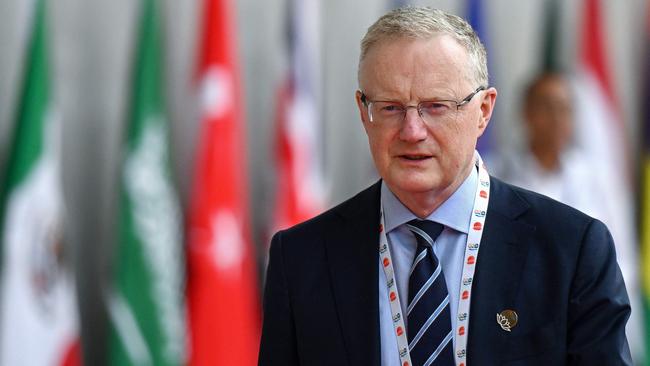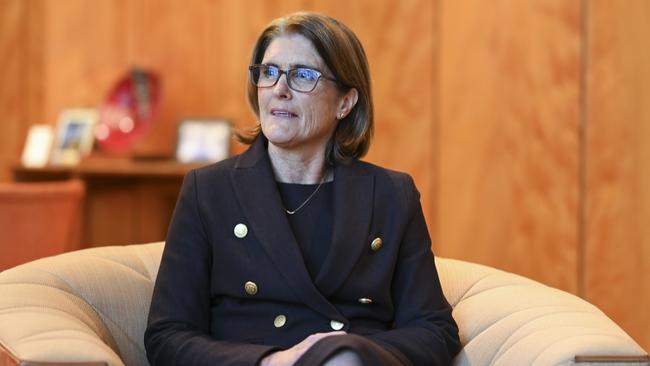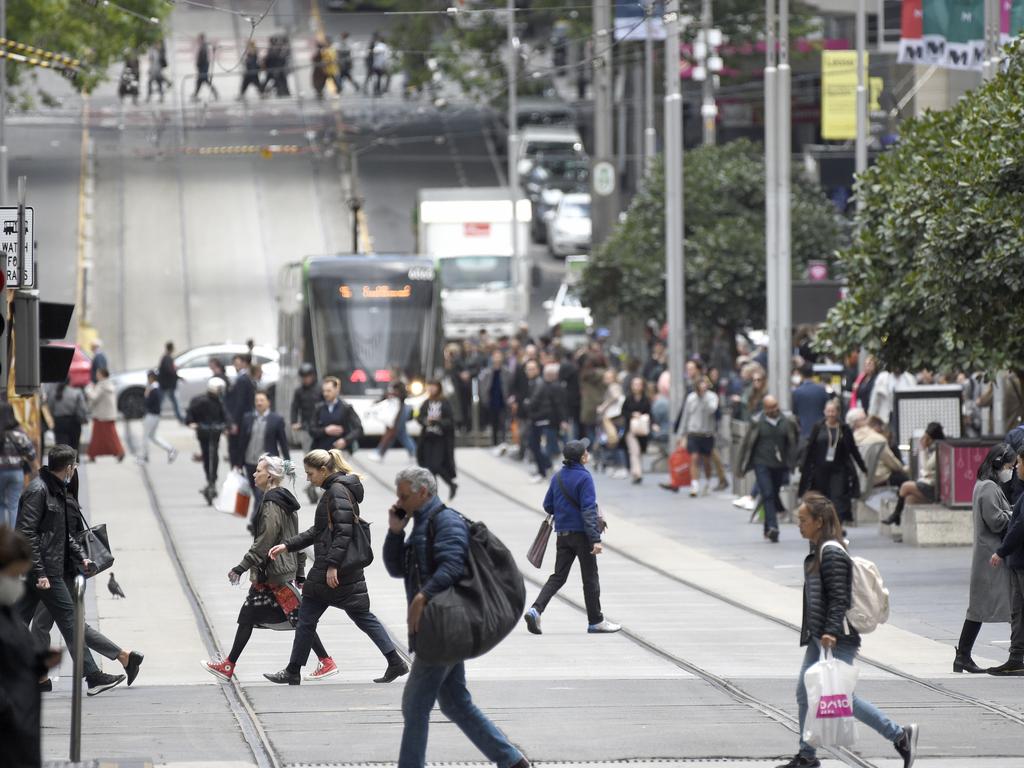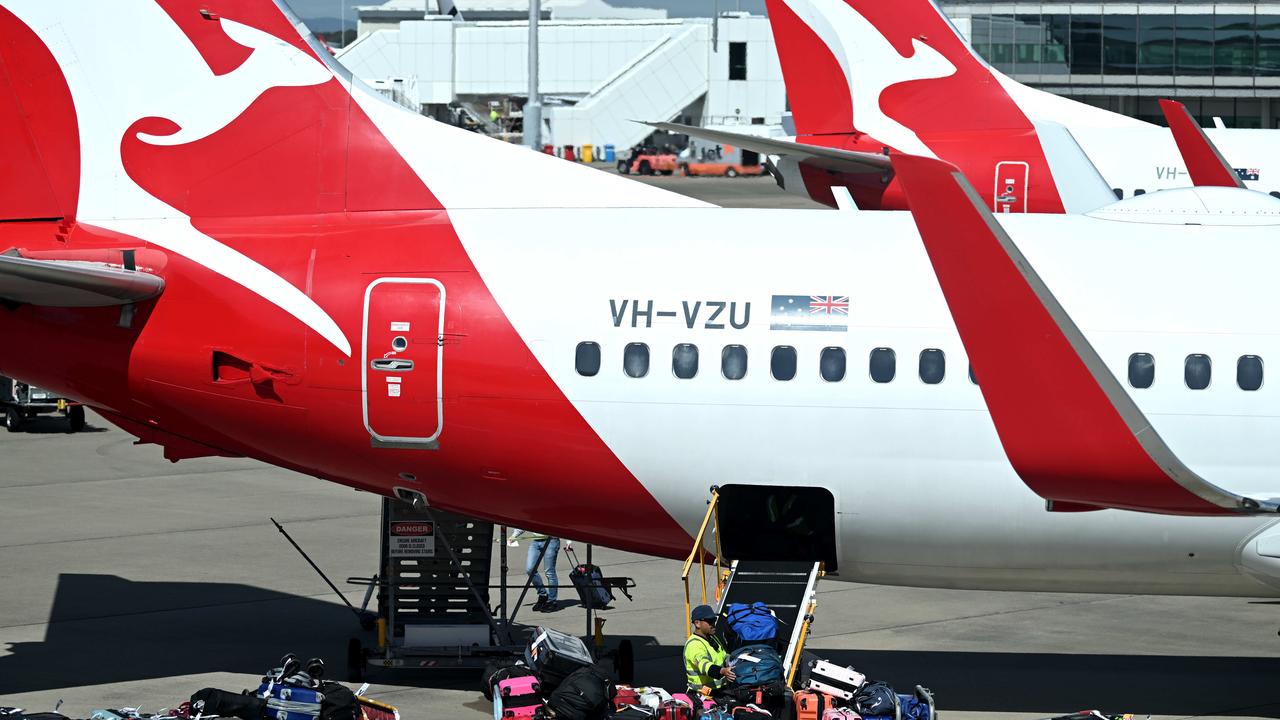Tight jobs market continues to be a risk for controlling inflation
It may be the greatest legacy of outgoing RBA governor Philip Lowe but the lowest unemployment rate in 50 years could cause problems for his successor, Michele Bullock.

Business
Don't miss out on the headlines from Business. Followed categories will be added to My News.
It may be the greatest legacy of outgoing RBA governor, Philip Lowe, but the lowest unemployment rate in 50 years could cause some headaches for his successor, Michele Bullock.
Thirteen months after the central bank began its fastest interest rate increase in three decades, the unemployment rate remains near 3.5 per cent, only slightly above a 50-year low near 3.4 per cent reached on the back of unprecedented fiscal and monetary policy stimulus during the pandemic.
The unemployment rate is almost 0.5 per cent lower than it was when rate hikes began and slightly below the RBA’s most recent forecast that it would average 3.6 per cent for the June quarter.
Jobs growth of 33,000 last month was more than twice expectations, driven entirely by the full-time category. A 2.9 per cent on-year rise in jobs was well above the RBA’s forecast of 2.5 per cent.
Inflation has fallen rapidly from a 30-year high of 7.8 per cent in the December quarter amid cooling energy prices, easing pandemic effects and rising interest rates.
June quarter CPI data next Wednesday are expected to show inflation fell to 6.2 per cent.
Recent lower-than-expected May CPI data give hope of June quarter inflation below 6 per cent.

Anything lower than the RBA’s forecasts of 6.25 per cent for headline CPI and 6 per cent for trimmed mean CPI inflation would increase confidence that inflation will fall to the top end of the 2-3 per cent target band by mid-2025, possibly leading to another steady interest rate decision. But the data are also expected to continue to highlight that core inflation remains significantly above the top of the RBA’s target band and is not likely to return to being within the band any time soon.
Moreover, an extremely tight labour market and the recent large increase in award wage rates increase the risk of a price-wage spiral that could force the RBA to lift rates more than expected.
The central bank’s inflation forecasts are partly based on its expectations that the unemployment rate will rise to 4 per cent by end-2023 and 4.5 per cent by end-2024.
However, while rising job vacancies data suggest the market will cool in the near term, the data point to the unemployment rate being well below 4.5 per cent, according to Capital Economics.
In a speech last month, Ms Bullock said a 4.5 per cent jobless rate is “not far off some estimates of where the NAIRU (non-accelerating inflation rate of unemployment) might currently be”.
If unemployment remained too low for too long, inflation expectations would rise, which would make it harder for the monetary authorities to bring inflation back down, Ms Bullock said last month.

The strength of the labour market was also reflected in a 0.5 per cent rise in hours worked.
With output growth slowing, that suggested that Australia’s productivity weren’t going away anytime soon, said Capital Economics economist Abhijit Surya.
“The productivity crunch will only add to the RBA’s ongoing concern that surging unit labour cost growth could lead to stickier inflation than it currently anticipates,” he added.
Explaining the RBA’s decision to not lift interest rates this month, the minutes of its board meeting noted that demand for labour typically responded to higher interest rates with a lag, “which implied that the current tightness in the labour market might also ease”.
The central bank also noted that higher interest rates “could also be expected to encourage households to save more, which would affect consumption” and “if that were to occur, the demand for labour would slow and the unemployment rate would be likely to rise beyond the rate required to ensure inflation returns to target in a reasonable time frame”.
However, the past two months of stronger-than-expected jobs growth – while boosted by surging population growth linked to immigration – show no sign of a sudden weakening in the jobs market.
“This outcome suggests trend employment growth remains strong at 39,000 per month and any fears the RBA has over an imminent or significant slowdown in the labour market are not being borne out in this data at least,” said NAB head of market economics Tapas Strickland.
“Population growth has surged as the number of temporary visa holders in the country has rapidly rebuilt and migrant inflows have resumed, but labour demand has been more than sufficient to absorb these higher population flows.
“As for turning points, there isn’t one in this data with the labour market remaining tight, though other leading indicators are pointing towards some mild softening over coming months.”
UBS chief economist George Tharenou said retail sales, business surveys and jobs data were “presenting an upside risk to our forecasts for household income, and hence inflation; and if sustained, our outlook for the RBA cash rate peak of 4.35 per cent”.
Australia’s labour market is ‘still very tight’, but strong jobs growth needs to be considered against the backdrop of the current very rapid pace of population growth, according to ANZ.
Originally published as Tight jobs market continues to be a risk for controlling inflation





